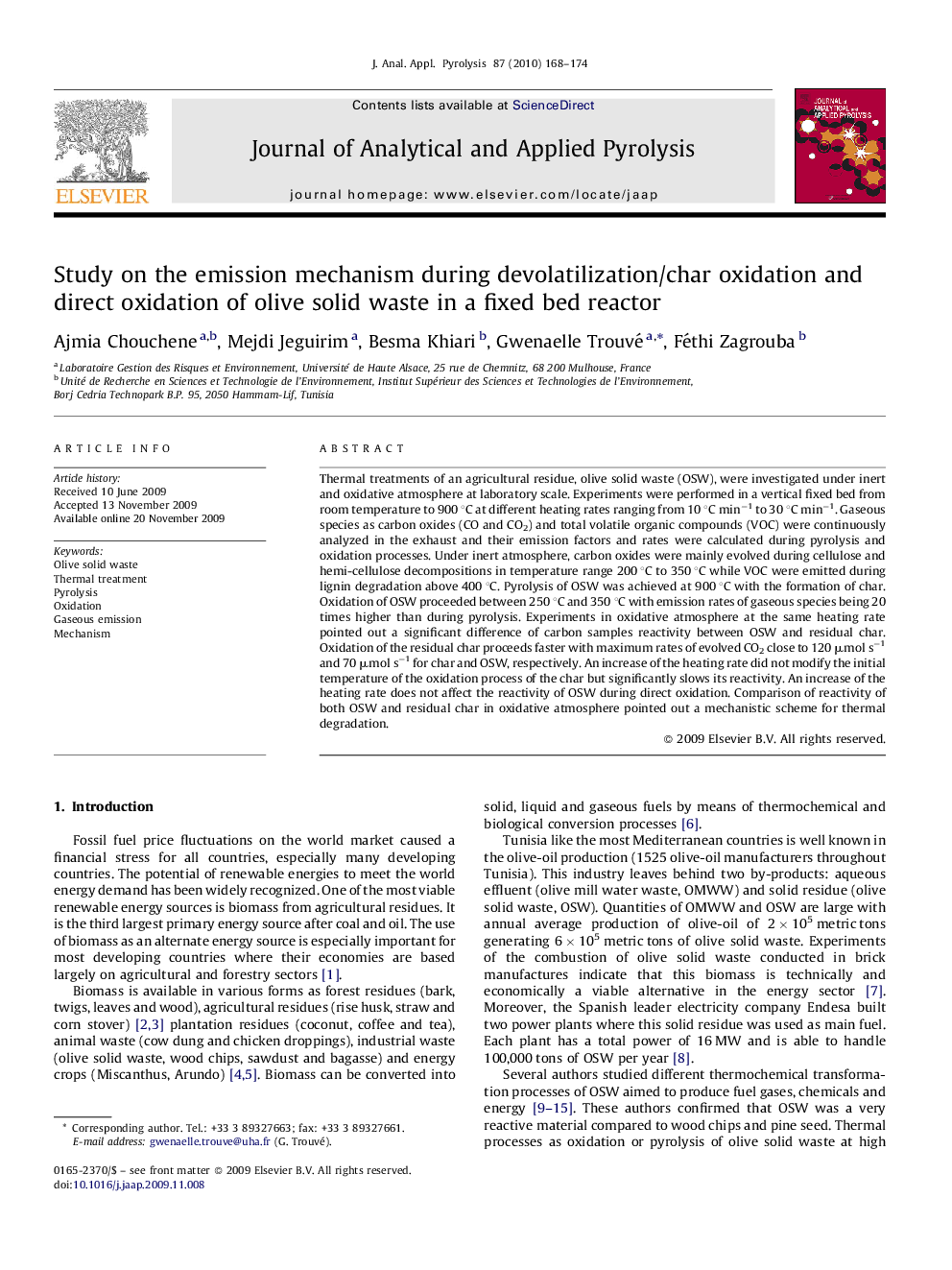| Article ID | Journal | Published Year | Pages | File Type |
|---|---|---|---|---|
| 1197157 | Journal of Analytical and Applied Pyrolysis | 2010 | 7 Pages |
Thermal treatments of an agricultural residue, olive solid waste (OSW), were investigated under inert and oxidative atmosphere at laboratory scale. Experiments were performed in a vertical fixed bed from room temperature to 900 °C at different heating rates ranging from 10 °C min−1 to 30 °C min−1. Gaseous species as carbon oxides (CO and CO2) and total volatile organic compounds (VOC) were continuously analyzed in the exhaust and their emission factors and rates were calculated during pyrolysis and oxidation processes. Under inert atmosphere, carbon oxides were mainly evolved during cellulose and hemi-cellulose decompositions in temperature range 200 °C to 350 °C while VOC were emitted during lignin degradation above 400 °C. Pyrolysis of OSW was achieved at 900 °C with the formation of char. Oxidation of OSW proceeded between 250 °C and 350 °C with emission rates of gaseous species being 20 times higher than during pyrolysis. Experiments in oxidative atmosphere at the same heating rate pointed out a significant difference of carbon samples reactivity between OSW and residual char. Oxidation of the residual char proceeds faster with maximum rates of evolved CO2 close to 120 μmol s−1 and 70 μmol s−1 for char and OSW, respectively. An increase of the heating rate did not modify the initial temperature of the oxidation process of the char but significantly slows its reactivity. An increase of the heating rate does not affect the reactivity of OSW during direct oxidation. Comparison of reactivity of both OSW and residual char in oxidative atmosphere pointed out a mechanistic scheme for thermal degradation.
